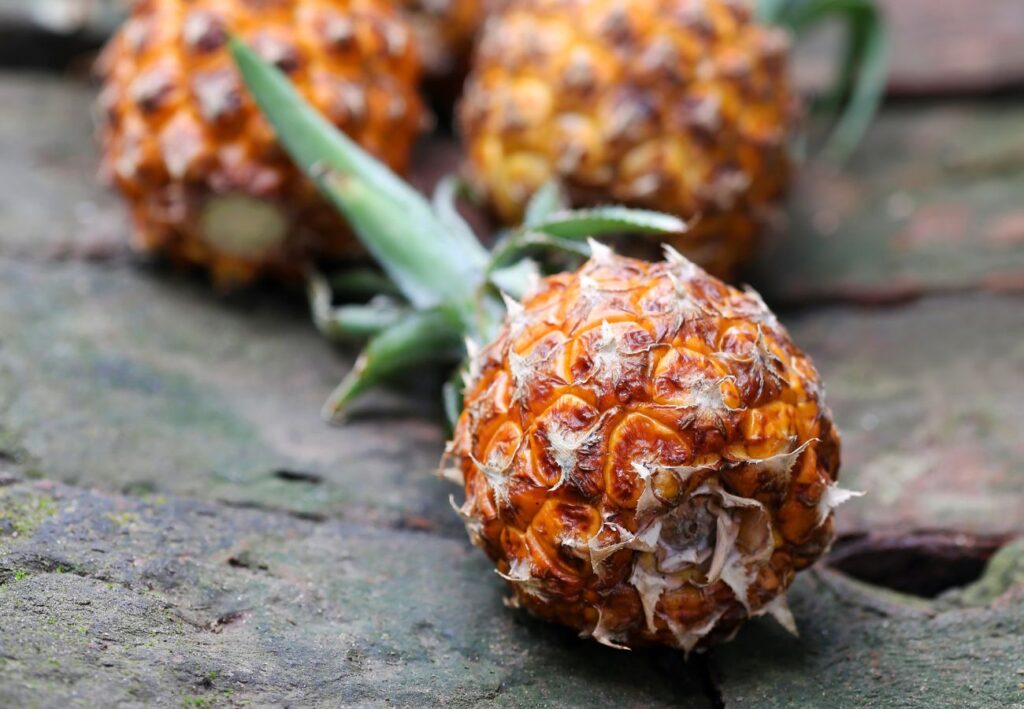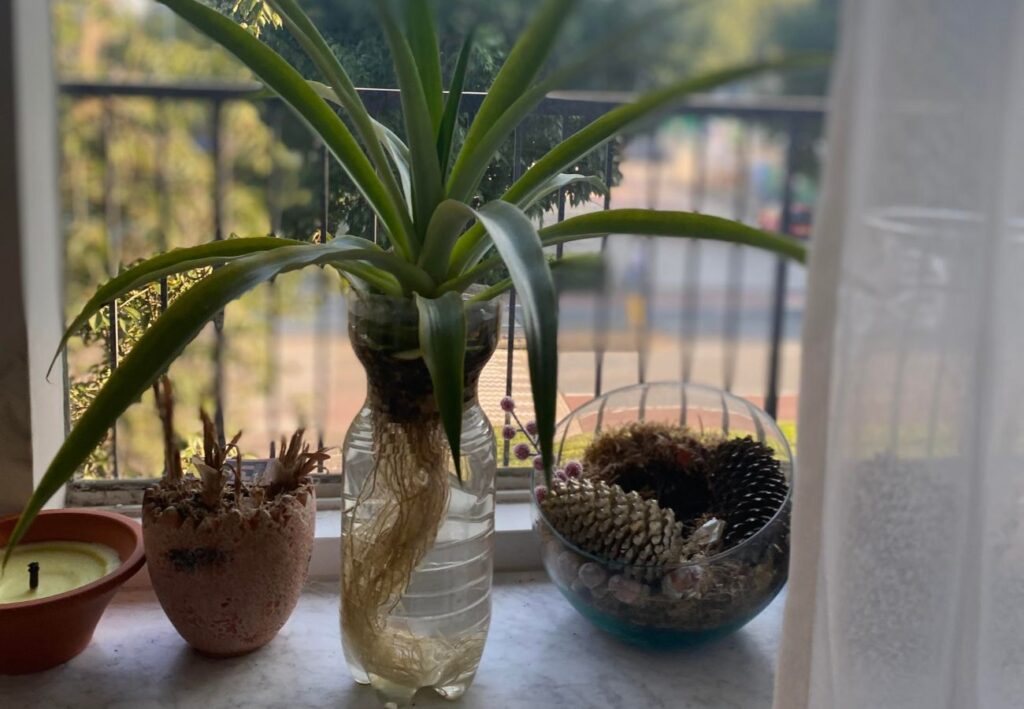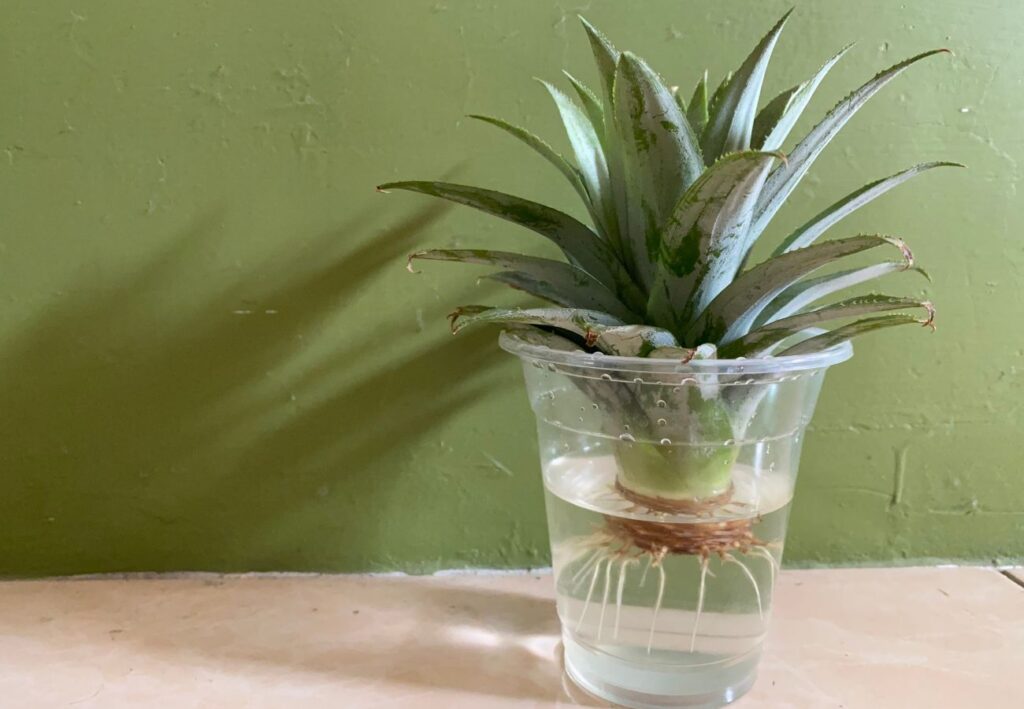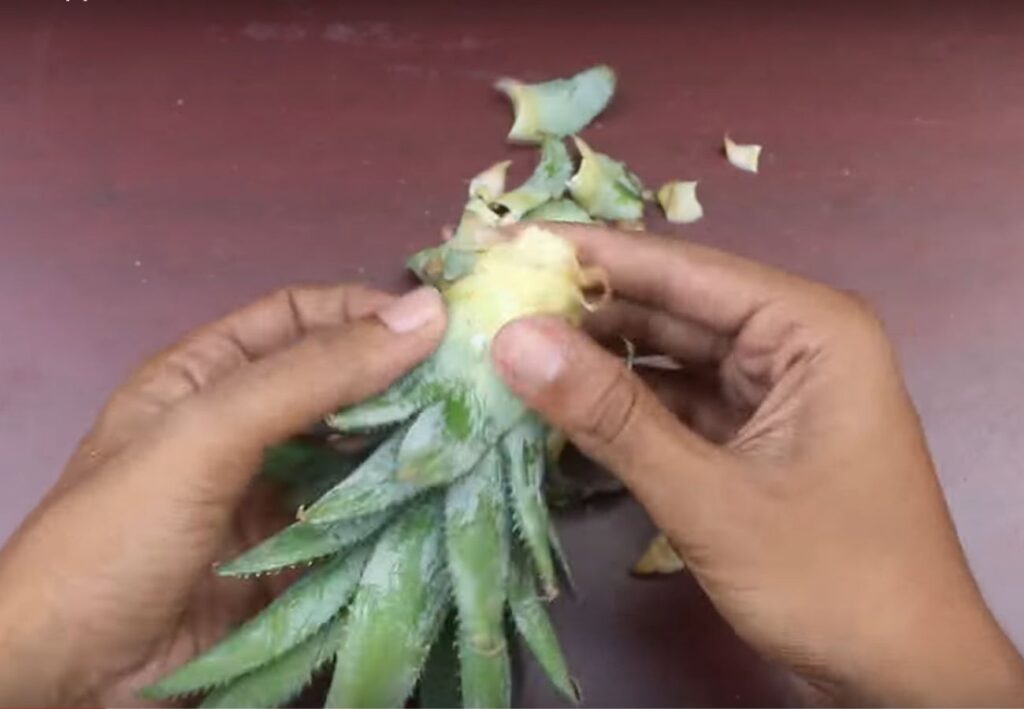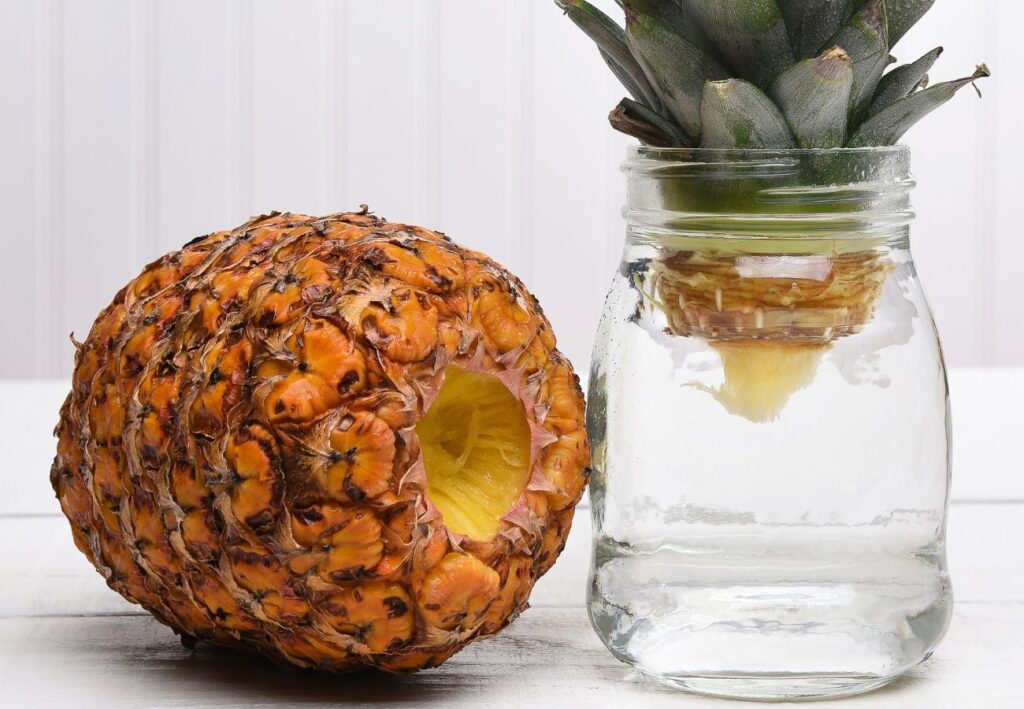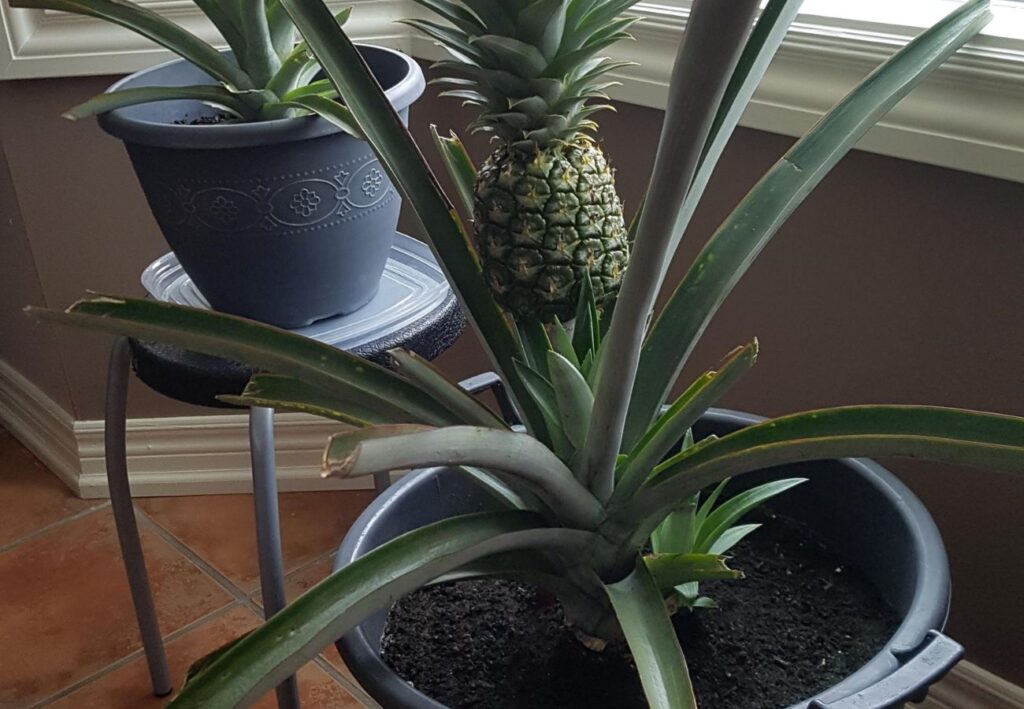Have you ever thought about growing pineapples right in your home? It might sound challenging, but it’s actually quite simple and fun when you know the right steps.
You can successfully grow pineapples in water, providing fresh, tasty fruit and a stylish addition to your indoor garden.
Starting your pineapple plant is straightforward. All you need is a fresh pineapple, a glass of water, and some patience. Before you know it, you’ll see roots sprouting and a new pineapple plant beginning to grow.
Imagine the joy of picking a pineapple you’ve nurtured yourself. Not only does growing pineapples in water offer delicious rewards, but it also adds a touch of tropical flair to your home decor.
Types and Varieties
Several types of pineapples are cultivated, each with unique characteristics.
Smooth Cayenne is the most popular variety, known for its juicy, sweet flavor and minimal seeds. It’s commonly found in grocery stores.
Red Spanish pineapples have a more robust, tangy taste and are often used in processed pineapple products.
Queen pineapples are smaller and sweeter, primarily grown in South Africa and Australia.
Sugarloaf pineapples are another less common variety, known for their extra sweetness and white flesh.
Each type has its own growing requirements and flavor profile, making them suitable for different uses and preferences.
The Essentials of Hydroponic Pineapple Growing
When growing pineapples hydroponically, you eliminate the need for soil, making it easier to control nutrients and water. This method ensures your plants receive everything they need in an optimal environment.
Understanding Hydroponics
Hydroponics is a method of growing plants without soil, using a nutrient-rich water solution. In this system, your pineapple plants’ roots are directly exposed to the solution, which helps them absorb nutrients efficiently.
You can set up a hydroponic system using various methods, such as the Deep Water Culture (DWC), where roots are suspended in nutrient-filled water, or the Nutrient Film Technique (NFT), where a thin film of nutrient solution constantly flows over the roots.
These setups ensure that your pineapples get the right balance of water, air, and nutrients.
Hydroponics also allows you to monitor and adjust the pH and nutrient levels easily. This precision ensures your pineapples grow healthy and robust.
Why Grow Pineapples in Water?
Growing pineapples in water is an easy and rewarding process that doesn’t require soil, making it a clean and convenient option for indoor gardening. Here are a few reasons why you might want to try this method:
- Space Efficiency: Without the need for large pots or garden space, growing pineapples in water is perfect for small apartments or homes.
- Educational: It’s a great way to learn about plant growth and root development, making it a fun project for both adults and kids.
- Aesthetic Appeal: Pineapples grown in water can be a unique and attractive addition to your home décor.
- Simplicity: It’s an easy process that doesn’t require much gardening experience or specialized tools.
Materials Needed
Before you start, gather the following materials:
- A healthy pineapple with a green crown (the leafy top)
- A sharp knife
- A glass or jar large enough to hold the pineapple crown
- Fresh water
Step-by-Step Guide to Growing Pineapples in Water
Step 1: Selecting the Right Pineapple
The first step to successfully growing a pineapple in water is selecting the right fruit. Choose a pineapple that is ripe but not overripe. Look for a fruit with a healthy, green crown of leaves. Avoid pineapples with brown or wilting leaves, as these are less likely to produce a viable plant.
Step 2: Preparing the Pineapple Crown
Once you have your pineapple, it’s time to prepare the crown for rooting. Here’s how:
- Cut the Crown: Using a sharp knife, slice off the top of the pineapple about half an inch below the leaves. Make sure you remove all the fruit flesh, as any remaining fruit can rot and affect the rooting process.
- Remove Lower Leaves: Gently peel away some of the lower leaves to expose about an inch of the stem. This will help the roots grow more easily.
- Dry the Crown: Allow the pineapple crown to dry out for a day or two in a cool, dry place. This helps prevent rotting once the crown is placed in water.
Step 3: Rooting the Pineapple in Water
Now that your pineapple crown is prepared, it’s time to start the rooting process:
- Place in Water: Fill a glass or jar with enough water to cover the bottom inch of the pineapple crown. Make sure the exposed stem is submerged while the leaves remain above the waterline.
- Positioning: Place the glass in a warm, sunny spot, such as a windowsill. Pineapples thrive in bright light, so ensure the plant gets plenty of sunlight each day.
- Change Water Regularly: To prevent mold and bacteria growth, change the water every few days. Keep an eye on the water level and make sure the stem is always submerged.
Step 4: Watching for Root Growth
Within a few weeks, you should start to see roots emerging from the base of the pineapple crown. Here’s what to look for:
- Root Length: Roots should be at least a couple of inches long before you consider transplanting the pineapple.
- Healthy Roots: The roots should be white and firm. If they appear slimy or discolored, it may be a sign of rot, and you should discard the plant and try again with a new pineapple.
Step 5: Transplanting (Optional)
While some people choose to continue growing their pineapple in water indefinitely, you can also transplant the rooted crown into soil if you prefer:
- Choose the Right Pot: If you decide to transplant, select a pot that is about 8 inches deep with drainage holes.
- Prepare the Soil: Use a well-draining potting mix, ideally one that is formulated for cacti or succulents. Pineapples prefer sandy, slightly acidic soil.
- Plant the Crown: Place the rooted crown in the pot and cover the roots with soil. Water it thoroughly and place the pot in a sunny location.
Caring for Your Pineapple Plant
Whether you choose to keep your pineapple plant in water or transplant it to soil, caring for it properly will ensure it thrives. Here are some tips to keep your pineapple plant healthy:
- Sunlight: Pineapples need plenty of sunlight, so make sure your plant gets at least six hours of direct sunlight each day.
- Watering: If you’re growing in water, keep the water level consistent and change it regularly. If your plant is in soil, water it thoroughly but allow the soil to dry out between waterings.
- Temperature: Pineapples prefer warm temperatures between 65-95°F (18-35°C). Protect the plant from cold drafts or frost.
- Fertilizing: If you’ve transplanted your pineapple to soil, you can feed it with a balanced, water-soluble fertilizer every two months during the growing season.
Patience is Key: When to Expect a Pineapple
Growing a pineapple is a slow process, and it requires patience. It can take anywhere from 18 to 24 months for your plant to produce fruit. During this time, the plant will continue to grow and may produce “pups,” which are small offshoots that can be used to grow additional pineapple plants.
Troubleshooting Common Issues
Here are some common issues you might encounter when growing pineapples in water and how to address them:
- Rotting: If the crown starts to rot, it’s usually due to too much water or improper drying before placing it in water. Ensure the crown is thoroughly dried before starting the rooting process and change the water regularly.
- No Root Growth: If roots aren’t forming, the crown might not be getting enough light, or the water might be too cold. Move the plant to a warmer, sunnier location and monitor the water temperature.
- Yellowing Leaves: This can be a sign of overwatering or poor water quality. Change the water more frequently and make sure the leaves stay dry.
Growing pineapples in water is a fun and rewarding project that anyone can try at home.
Whether you’re an experienced gardener or a beginner looking for an easy introduction to plant care, this method offers a unique way to enjoy the beauty of pineapple plants.
With a bit of patience, perhaps even harvest your own home-grown fruit. Follow these steps, and you’ll be well on your way to creating your very own tropical oasis indoors.


